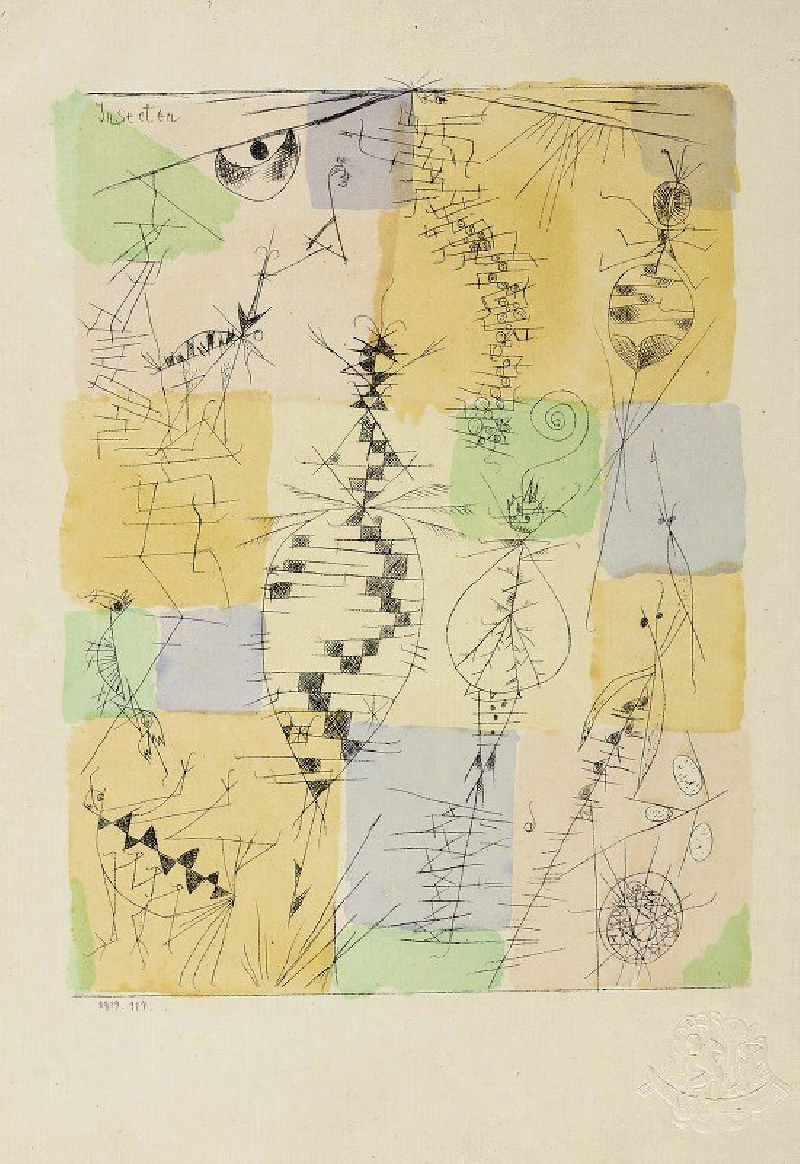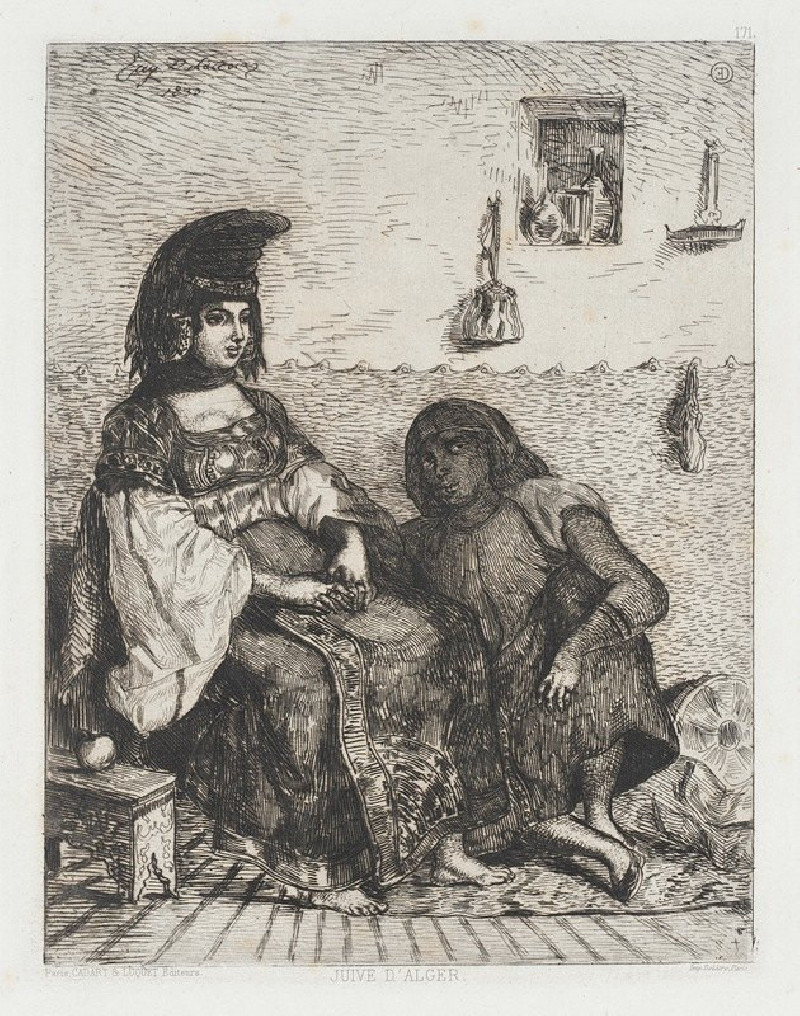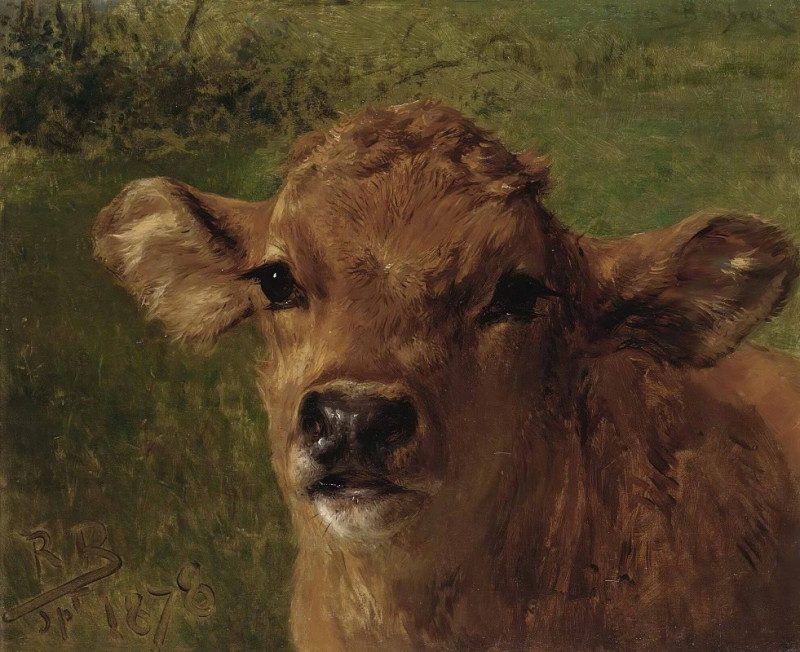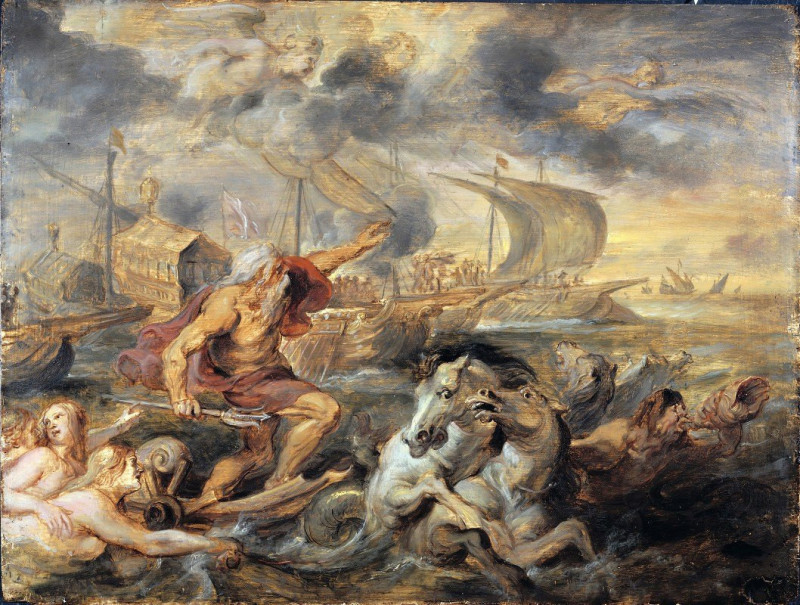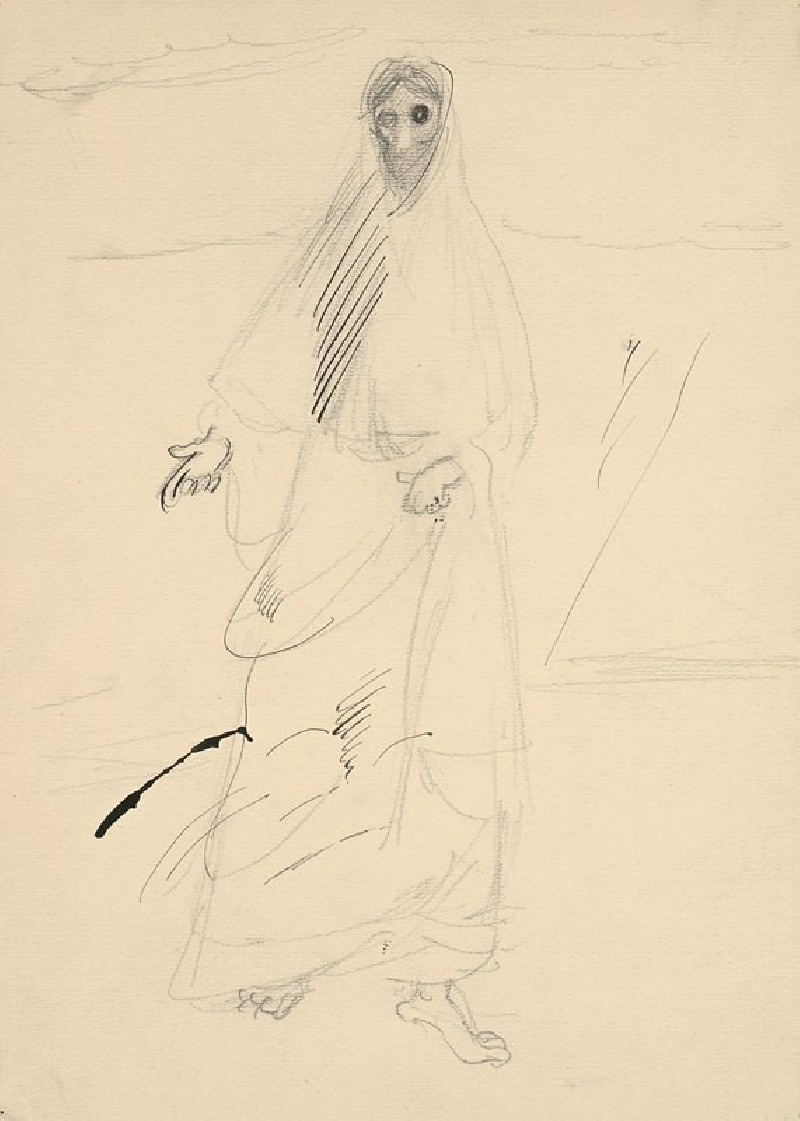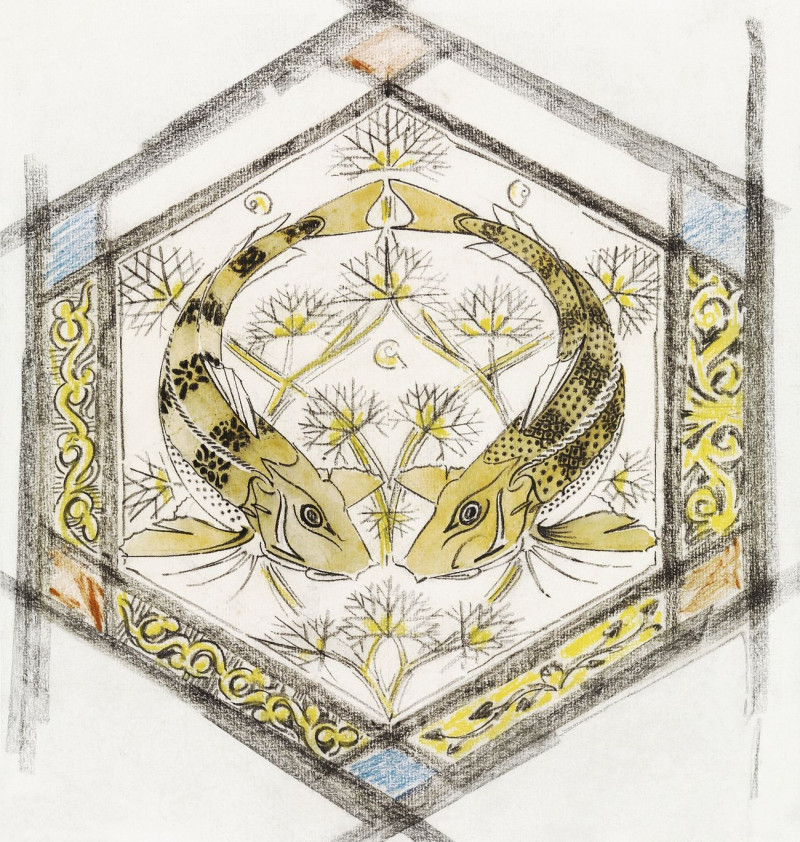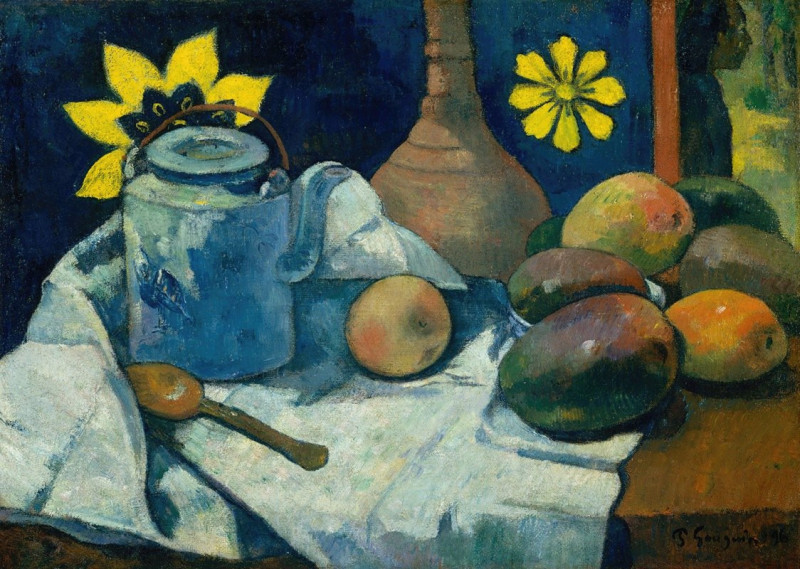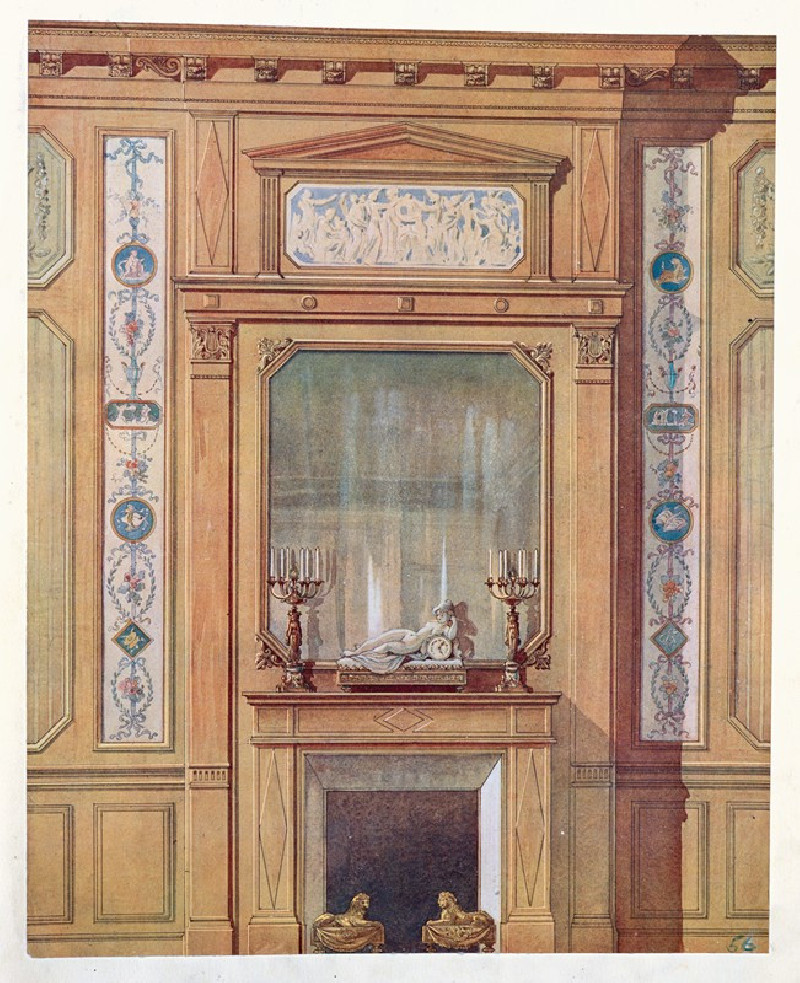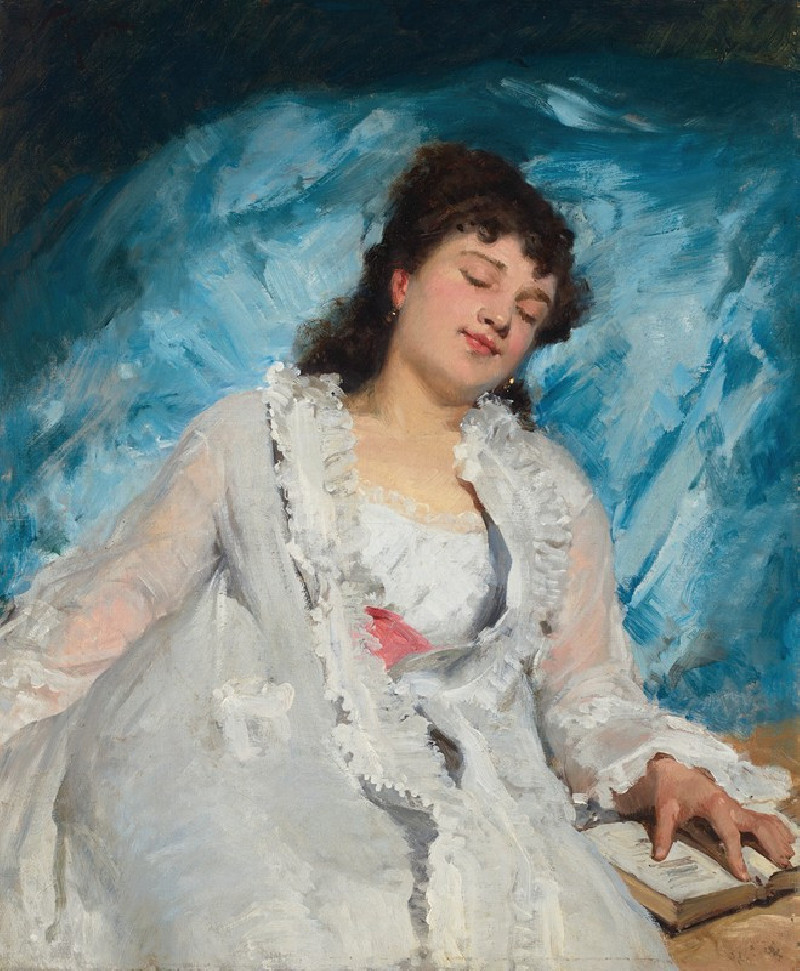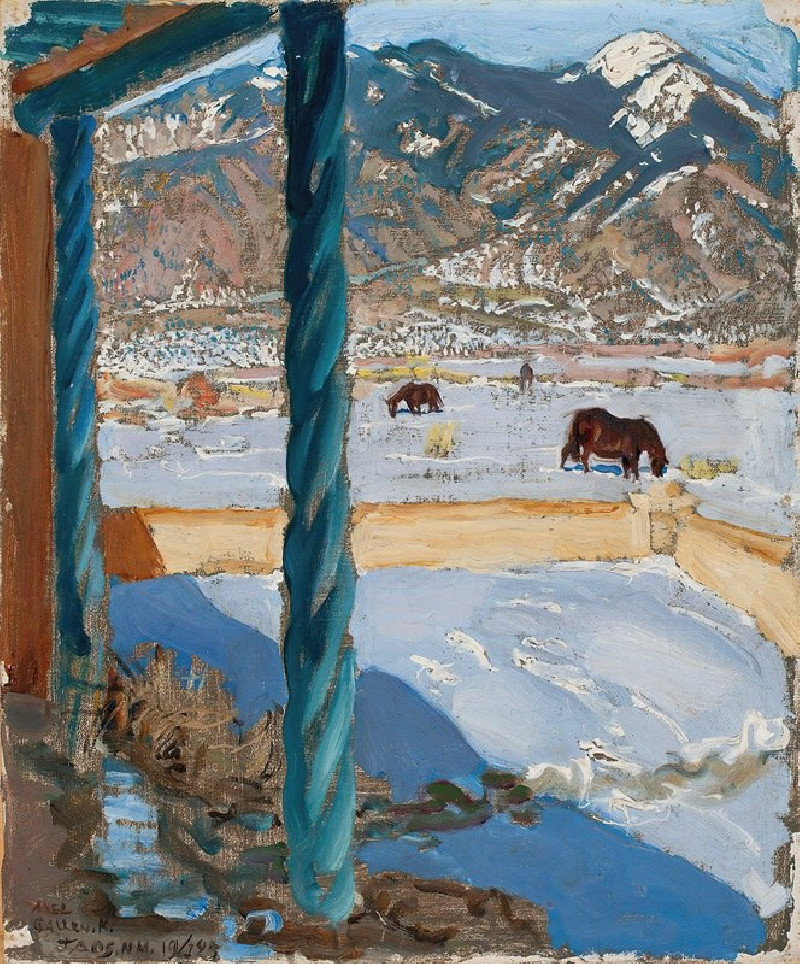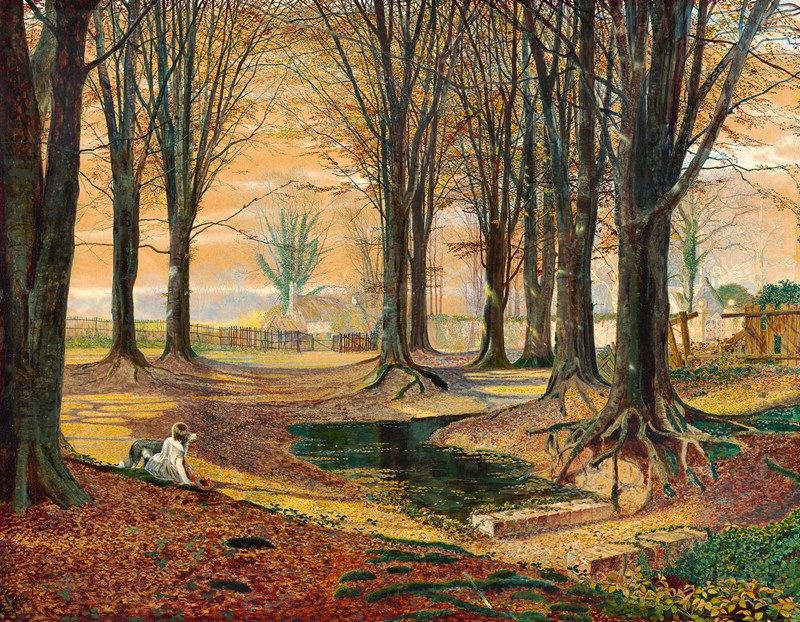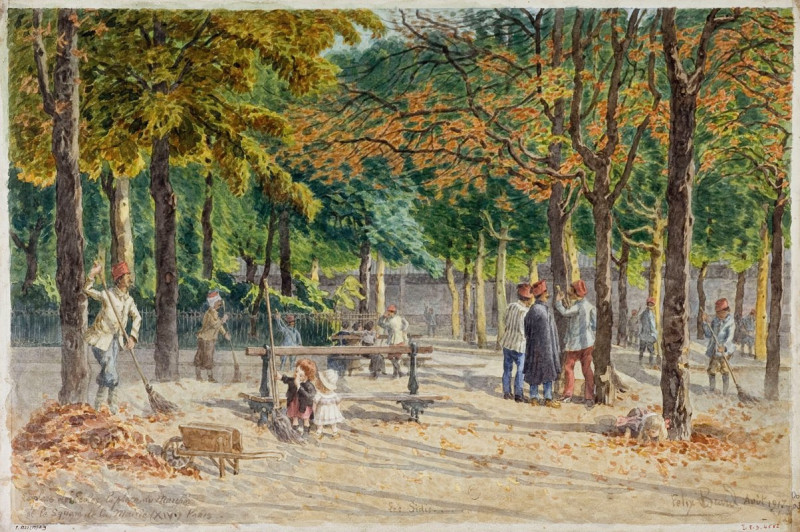Insekten (1919)
Technique: Giclée quality print
Recommended by our customers
More about this artwork
Paul Klee’s 1919 painting "Insekten" invites viewers into an imaginative world where abstract forms and delicate lines suggest the whimsical essence of insects. In this artwork, Klee masterfully combines geometric and organic shapes to illustrate a vivid portrayal of various imagined insects, each characteristically unique and engaging. The use of subdued yet warm color patches evokes a sense of fragmented yet harmonious natural environments, possibly reflecting Klee’s perception of an insect’s microscopic world.The composition is segmented into color fields that serve as backdrops for the finely sketched creatures, where each segment interacts with the others through overlapping lines and shapes, creating depth and dynamism. Klee's distinctive linear technique, detailed yet free-form, captivates the viewer’s eyes, guiding them across the canvas to discover new forms and connections within the playful chaos."Insekten" is not only a testament to Klee's creative genius in the use of line and color but also an invitation to explore the boundaries of representation and abstraction.
Delivery
Returns
Paul Klee was a Swiss-born German artist. His highly individual style was influenced by movements in art that included expressionism, cubism, and surrealism. Klee was a natural draftsman who experimented with and eventually deeply explored color theory, writing about it extensively; his lectures Writings on Form and Design Theory (Schriften zur Form und Gestaltungslehre), published in English as the Paul Klee Notebooks, are held to be as important for modern art as Leonardo da Vinci's A Treatise on Painting for the Renaissance.

